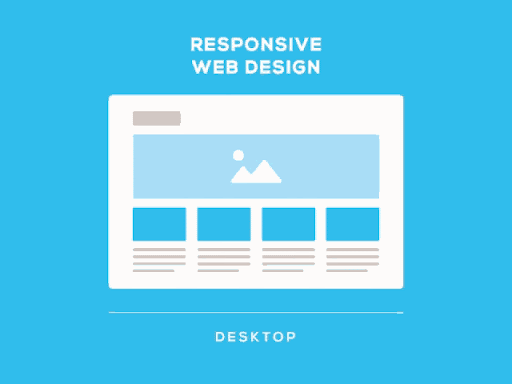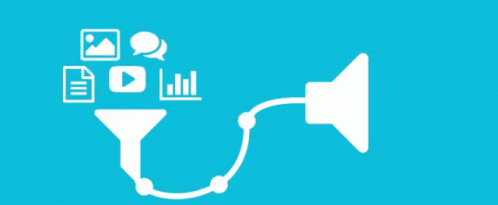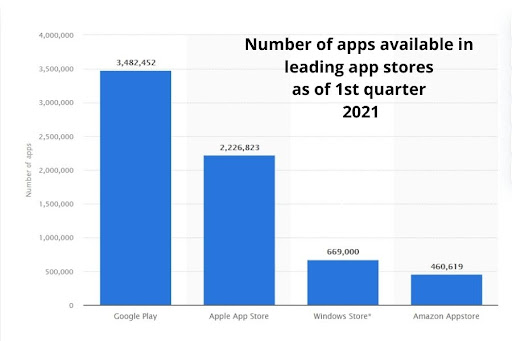The Global mobile app revenue market will reach $808.7 billion by next year (2022), says Statista. With such impressive market growth and a stunning promise of worldwide fame, mobile apps remain the hot piece of cake for every enterprise & entrepreneur out there.
However, before you try to leverage the mobile app market growth, it’s critical to learn the ABCs of the app development process. An amateur jump without prior preparation is the last thing you want to do in a highly competitive market.
The life cycle of mobile app development can seem like a complex process to navigate when you’re just starting.
- What tools and resources do you need?
- How much will it cost?
- What should you prioritize in the early stages of development?
These are some of the earlier queries that strike the mind.
No worries. This guide will walk you through everything that’s involved in the mobile app development life cycle and help you avoid the most common pitfalls and mistakes along the way.
Here’s How You Should Proceed:
1) Research & Establish the Mobile App Goals
A mobile app development company should never rush you into moving forward with your app. A big part of building a successful mobile app is research; it’s crucial to understand your:
- Market,
- Audience, and
- Business Goals
Analyzing these three things is a must before getting started with the project. At each stage of your project, from ideation to design and marketing, take some time to ask yourself:
- What problem am I trying to solve?
- Who has that problem right now?
- And how can my idea fix that issue or improve their lives?
The answers will help you focus on essential features for your audience– whether making a booking easier or providing them with more information- rather than just adding bells and whistles because they sound incredible.
Thus the first step is doing your research, but how exactly can you perform market research? Start by using Google Analytics, surveys, focus groups if you already have an app or idea, or conduct surveys if you’re exploring your options.

Source: Statista- Research Time Spent by Professionals
Learn as much as feasible about existing competitors in your space. Meet up with them and learn what users like and dislike about their experiences with apps in that category.
And if they don’t exist yet, try out their competitors! That will give you insight into areas where your potential audience isn’t being served well right.
2) Design a User-Friendly Outlook via Wireframing

The primary step in mobile app development is design aspects, and it’s also one of the most important. Research has shown that consumers have some precise criteria for choosing a product on a mobile device. Namely, information on that product should be presented in an easy-to-understand format and be visually appealing.
In other words, making your app pretty and user-friendly is just as important as making it highly functional. Once you’ve got a design you’re happy with, please don’t stop there: ensure that every element functions seamlessly and doesn’t conflict with elements around it.
To effectively make the most of this step, you can trust wireframing tools available online. Wireframing your app mainly refers to creating a basic design layout for each page and function within it.
Some modern wireframing tools include Mockingbird, Balsamiq, and OmniGraffle (for Mac users). With a design in place that makes use of these three W’s—wireframes, whiteboards, and working prototypes—you’re ready to take things a step further with a clickable prototype in Adobe XD.
A clickable prototype allows you to share your idea in a way that’s much more engaging than just words on paper or PDFs. It lets clients click through each page or function to see how everything works from start to finish.
3) Focus on the Technology Stack of the App
There are tons of various technologies you can use to develop your mobile app, but I am sure that most developers would agree that React Native is probably one of them that is worth considering. It has high popularity among developers, standing at 14.51%, as per Statista.
With JSX and ES6 syntax, you won’t have any problems with compatibility. Moreover, it has excellent integration with native Android and iOS components, which means you will save quite a lot of money for the development team if there are any.
You could also use another cross-platform solution– Ionic with Apache Cordova/PhoneGap (popularity 7.18% among worldwide developers) as a backend. It gives you a great development experience if you are more comfortable with HTML/CSS.
Here’s what Statista has to say when considering your programming project’s top libraries and frameworks.

Source: Statista- Most Preferred Libraries & Frameworks
In my opinion, it’s nice to have a choice here so if one doesn’t work for you – try another! Hire mobile developers who leverage the most compatible technology stack for your project.
4) Develop a Prototype or an MVP

A lot goes into starting a company and building an app, and, likely won’t know what your product will look like until well into development. Instead of diving straight into coding, create a prototype or minimum viable product (MVP).
It will help you validate your business idea and show potential investors and clients what your product could look like. Even if you don’t plan on pitching your idea anytime soon, prototypes are still valuable for getting users engaged early on—and they can help important layout aspects of design.
If all goes well, once you have a prototype for an MVP, your future clients will be able to see how things will work as soon as they sign up.
5) Perform Beta Testing to Identify & Resolve Bugs
Once you’re happy with your product, it’s time to get others involved in your beta testing program. By enlisting trusted family and friends, you’ll gain valuable insight into what works (and doesn’t) in terms of functionality and design.
This feedback is invaluable when you’re developing products for an unknown market; building relationships early can help ensure your product meets their needs.

Source: Statista- Popular Software Testing Tools
When ready with the app, it’s crucial to do beta testing with real users to find bugs and get honest feedback. If you’re building your app for an audience of 1,000 people, beta testing with 1,000 people is ideal so that you can identify issues or problems with scaling.
When beta testing goes well, you should understand if any features don’t work well or gaps in your mobile user experience.
These are things that your users will likely let you know about before you launch, & it helps get all of these concerns out of the way early on rather than waiting until after launch.
Another way you can test-drive products before launch is through Test Flight, Apple’s public beta-testing platform, which lets iOS developers invite people to try prerelease versions of apps on iOS devices.
6) Market your App- It is a Must!

Marketing your app is arguably just as important as making it. To successfully grow your app, you’ll need a solid strategy for getting users, and that all starts with defining your target market.
You’ll also want to develop different ways of promoting your app, such as email lists, social media ads, and word-of-mouth marketing strategies. Before creating an advertising campaign, spend some time researching what will resonate best with your audience and why they would want to download your app in the first place.
From there, you can create a message or ad that resonates and drives downloads for long-term success. Whether you’re building an app for iOS (26.75% OS Market Share) or Android (72.44% OS Market Share), there are certain things you can do to make your app more visible in search results and encourage downloads.
For example, research what keywords potential users will use when searching for your type of app; these are called long-tail keywords, and optimizing for them gives you a better chance of showing up in searches.
You’ll also want to include at least 250 words of text on your landing page, as well as 2–3 screenshots (one is probably enough) that give potential users a sense of what they can expect if they download your app.
Furthermore, make sure that every link on your site includes keywords related to your product or service; otherwise, Google may interpret those links as spam.
7) Launch the App on a Leading App Market
Launching is arguably one of your most essential steps in app development, and it will be where you get a solid user base and determine if your idea is viable or not. Launching should be pretty easy on you if you did a lot of planning during your ideation stage, but there are still some things to consider.

Source: Statista- Leading App Stores
For starters, you must create a marketing plan before launch day, which includes who your target audience is, what mediums you will use for outreach and how much money you’re willing to spend on each channel.
It would help if you also had a feedback loop set up from day one that allows for effective communication after downloading the app.
8) Work on Updates As Per User Feedback
While your first app will likely have everything you’ve ever wanted, the chances are high that you can improve on certain aspects of it. If your first mobile app is doing well, you should incorporate user feedback into your second app’s future updates.
The old saying, It’s not what they say but how they use it, rings valid for apps; if people like it enough to use it regularly and offer helpful suggestions for improvement, take those suggestions seriously.
After all, if users like an app and provide meaningful advice for improving its usability or function, then that shows there’s a good reason why they like it in the first place. So incorporate their feedback into future updates.
How Can I Make Lots of Money With My Mobile App?
Launching a mobile app can be challenging. Even after you figure out how to get your app in front of people, the next step is figuring out how to make money from it.

Source: Statista- App Monetization Methods
Let’s look at three different monetization strategies and how they work in practice in real-world mobile apps.
Subscriptions: Subscriptions are among the most popular monetization strategies because it’s a two-way street: Your users get a valuable service, and you get a reliable, recurring revenue stream. If your app doesn’t provide an essential service or solve a problem that no other app can, then subscriptions might not be viable.
In that case, you might consider paid downloads or offering in-app virtual goods. For instance, if your mobile app helps people stay up to date on what’s happening in their city by delivering news alerts & content daily, you could charge $1 per month for an all-access pass. So they don’t have to keep paying for individual stories throughout the day.
In-App Purchases: In-app purchases have grown into a significant revenue source for mobile developers, generating $40 billion in revenue last year. In-app purchases don’t work well for every app, but they can be worth considering if your app is a utility—for example, a photo editor or file manager.
Monetizing in-app purchases is simple: Include items for sale within your app and price them so that you can make a profit from each purchase. In-App Purchase SDKs typically include calls to track which item was purchased and when users consumed it.
Advertising: Advertising is a flexible monetization model that works well with a variety of apps. Typically, in-app advertising involves a third party placing ads in your app and then sharing ad revenue. The two most common types of advertising include paid search and cost per click (CPC).
CPC allows advertisers to bid on keywords related to your app’s niche, so it’s helpful if you can think of relevant keyword categories that people might use when searching for an app like yours. Paid search is handy for mobile games; advertisers pay based on how many times users click on their ads, making it easy to turn off advertising when it’s no longer working for you.
What’s the Cost to Create a Fantastic Mobile App?

Mobile app development has become significantly less expensive than it used to do not mean that developing an app is free of charge. Developing an app will cost you money, but the amount of money you’ll need to spend depends on your objectives and what exactly you want to achieve with your app.
Design Costs: A good rule of thumb is allotting 20% of your development budget for design and planning. Apps should be well-designed and function effectively; if they don’t, your users will quickly move on to other apps searching for what you can’t provide them with—which is what you don’t want. If you opt for an offshore development team, be sure that your developer fully grasps what you’re looking for.
Software Costs: Software development can be one of, if not your highest, costs when developing an app. It would be best if you chose tools & programming languages based on their ease of use, adaptability, and customization level. You’ll also want to determine whether or not you will make an iOS (Apple) or Android (Google) version of your product. Cost-wise, Android tends to be more economical.
Development Costs: Mobile App Development costs vary significantly based on several factors, including the type of application, platform(s) targeted, complexity, and functionality.
You must select an application development partner that will provide you with accurate estimates for your project as part of their sales process.
Overall the development cost of the project varies as follows:
Simple Mobile Apps: $20,000 to $35,000
Mid-Level Complexity Mobile App: $35,000 to $70,000
Highly Complex Mobile Apps: $70,000 & above
Wrapping Up
Never underestimate what a small mobile app can do. The mobile market is enormous and continues to grow larger every day. With millions of apps on various platforms, making your own is a daunting task. But with careful consideration, development is certainly possible.
It takes hard work to create an app that will be successful in today’s market—but if you’re willing to put in that effort, you might find yourself making one of next year’s top 10 most downloaded apps! Connect with a Top Mobile App Development Company to ensure the massive success of your project.
With proper research and diligence, anyone can develop their first app; hopefully, I’ve given you some helpful tips along the way! Good luck!
FAQs
Question: Is App development an Easy Process?
Answer: Developing an app can be easy, but there are many aspects to consider before deciding what kind of application is right for your company. Before you start development, think about who will use your product and what platform they’ll use.
If you already have an existing target audience or market share, you might want to create an app that will value them. If you’re starting, developing an iOS or Android-only application might not be worth your time if there isn’t an immediate need for one of those devices within your target audience.
Question: Should I go For Android or iOS or a Cross-Platform Mobile App?
Answer: There are plenty of reasons for wanting your app on multiple platforms, including you’re creating an app as part of a platform (say, Uber or eBay), or you plan on developing new features that will be released on different platforms first (think Instagram and Hyperlapse), or you are aiming to reach as many users as possible with your application.
Ultimately, there is no right or wrong answer; weigh up which factors make sense for your goals and see which route works best for you. In most cases, selecting one platform over another comes down to business goals.
Question: How many apps are released worldwide daily?
Answer: Nearly 4000+ Mobile Apps are released worldwide daily.


